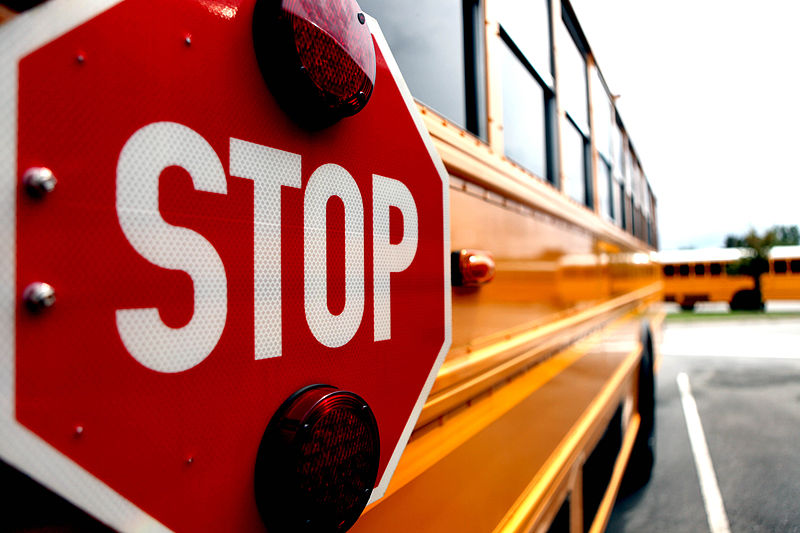Back in 2017, techno-optimist Jason Bedrick made the skeptical Robert Pondiscio a bet on the adoption rate for self-driving cars in the Phoenix area:
"Robert and I are putting our money where our mouths are. Although I expect that in five years, few people will be sending their kids to school in autonomous vehicles, I predict that at least 25 percent of children in the Phoenix area will get to school via a self-driving car by the 2022-23 school year. This may sound overly exuberant, but with self-driving cars already on the Phoenix streets and Waymo launching its taxi service, I expect high demand for the safety that self-driving cars offer."
Pondiscio won the bet (a trip to a bar for a beer in a self-driving car). The 2022-23 school year turned out to be an aggressive prediction, especially given the pandemic's debut in 2019. Today in 2025, self-driving cars are increasingly ubiquitous in the Phoenix area. Phoenix also has a minimal amount of variation in weather, which represents a technical challenge for self-driving cars (R2D2 does not like fog). The price of a self-driving car ride remains slightly higher than a traditional ride-sharing trip, but there are paths to get the cost down and the very cautious driving style of automated taxis might appeal to parents. Not having to get into a car with a stranger might also help.
Anecdotally I am hearing reports of the parents of school age children using self-driving cars for extra-curricular activity transport and rumblings of school carpooling via Waymo. A carpool of adjacent students attending the same school would have advantages for both families and schools.
Arizona student transportation is, in a word, a mess. Everyone pays a property tax, which goes for a district yellow bus system that largely spins around in the same district attendance boundaries that Arizona families began ignoring decades ago. Thus, year by year yellow-bus ridership declines, but the cost of the system continues to rise. Consequently, if you drive past schools in the Phoenix area in the morning or during pickup time in the afternoon what you will often see is an extensive line of personal vehicles. So, what if humans didn’t need to be sitting in those lines (editor’s note: it’s not exactly fun to sit in a car line in Phoenix heat) and what if through carpooling there could be far fewer cars in the line?
Carpooling is the lowest of low-hanging fruit to address this issue; every empty seat in every vehicle is an opportunity. Arizona’s move toward a larger number of smaller schools calls for a more flexible and nimble system of student transportation that delivers smaller groups of students to a wider variety of schools. The combination of decreased self-driving costs and the modernization of antiquated student transportation policies might just happen. Alas, it is not going to happen on our preferred timeline (yesterday).

A new Florida law that expanded education choice eligibility also allows public school districts more flexibility in transportation.
Each weekday morning feels like a new nightmare.
The Echo Dot alarm goes off at 4:55 a.m. so my husband can make sure our son wakes up in time to make it on time to high school.
Morning bell: 7:06 a.m.
We flip on the overhead bedroom light and start the wakeup warnings.
It’s a process. The lump under the covers doesn’t budge as the warnings take on a more threatening tone. The bus departs at 5:59 a.m.
Our bleary-eyed teenager gets up at the last possible minute, skips breakfast and grabs an energy bar as he gets in the car for the mad dash to the bus hub.
The stakes are high.
If he misses that bus, it leaves mom or dad on the hook to drive him to school, which is outside our attendance zone. It’s an hour round trip for us if we are lucky enough to arrive before peak car line time.
On days when the bus runs late, mom or dad are still on the hook. Education is a huge deal in our family and missing even a few minutes of first period is unacceptable. We count ourselves fortunate with our flexible remote work schedules to be able to make that sacrifice, as inconvenient as it is.
We know that financial situations and job schedules leave some parents with no other options, putting their kids at risk of falling behind because they miss valuable instruction time.
It’s unfair, but solutions have been elusive.
Getting to school on time wasn’t always such an ordeal.
Until 2021, all Pasco County high schools started at 7:30 a.m. Sleep research shows that’s still too early for teens. Their circadian rhythms keep their eyelids from feeling heavy until about 11 p.m. Students in rigorous specialty programs such as Cambridge, dual enrollment or International Baccalaureate, which my son is in, get hit hardest due to homework loads that keep them studying until the wee hours.
Last year, plagued by a severe shortage of bus drivers, our school board approved new start times at all the schools so fewer drivers could cover more routes.
Though the situation smoldered for years nationally before COVID-19 became part of our collective consciousness, the pandemic caused a surge in demand for commercial drivers and turned It into a five-alarm fire.
Our son’s school got placed into the first of a new four-tier bus route system. Some other schools, mostly elementary, got their start times pushed to 10:10 a.m. The changes wreaked havoc with work schedules, bedtimes and wakeup times for all families, disrupting even those who didn’t depend on the bus.

Dylan Wood, left, and his father, Mark Wood, get up at 5 a.m. to make it to the bus stop before 6 a.m. Photo by Lisa Buie
Officials told upset parents that they disliked the changes, too, but saw no other way but to make do with fewer drivers as they struggled to attract people willing to transport sometimes unruly students and work a split shift for $15 an hour.
No one mentioned that the shortages were symptoms of a broken, antiquated business model that was created before World War II. I heard no calls for a need to scrap the old system and build a 21st century system capable of serving students in the era of school choice and customized education. That’s likely because yellow school buses, driven by licensed commercial drivers, are the only option available to districts under Florida law.
Neither did I hear anyone discuss looking at other states, particularly Arizona, which has a reputation for innovation.
“Public school transportation is expensive, bureaucratic, and cumbersome,” wrote Emily Anne Gullickson, founder and CEO of A for Arizona, a nonprofit organization that seeks to solve education issues with best practices from the business community. “Needless to say, changes to our K-12 public transportation system are long overdue. But rather than put a Band-Aid on a failing system, Arizona chose to move forward in the 2021 legislative session with meaningful change prioritizing equity and opportunity.”
The result was the Arizona Transportation Modernization Grant Program, authorized by the state and administered by A for Arizona’s Expansion & Innovation Fund. The program gives schools, local governments and organizations the opportunity to reimagine public school transportation.
The first year, $20 million of state and federal funds were granted as seed funding to the best proposals that meaningfully improved access to safe and reliable transportation for districts offering open enrollment or public charter schools as well as submissions that supported efficiency and broader K-12 innovation.
Funded projects included Black Mothers Forum’s carpooling app, a partnership between local school districts and its Boys & Girls Clubs to use the nonprofit’s mini-buses, while another partnered with third-party provider HopSkipDrive to scale ridesharing for students who needed customized solutions.
This year, an additional $14 million in grant funding has been approved.
Florida approved landmark legislation this year to establish universal eligibility for education choice scholarships. Not surprisingly, that part of the bill grabbed the media spotlight. What didn’t get covered was the part of the bill that mandates relief to public school districts of “the most onerous regulations.” In selling the bill, lawmakers said it would help ensure a fair playing field in the competition for students’ education dollars.
Among the list of provisions: the ability for districts to use alternative means to get students safely to school. That doesn’t mean the big yellow buses will go away, state Sen. Corey Simon said during committee meetings. However, it would relax the mandate that the yellow bus system is the only allowable method, allowing districts to find solutions that make the most sense for each situation.
The bill drew praise from former state Sen. Bill Montford, a former public school superintendent who is now CEO of the Florida Association of District School Superintendents.
“We want our schools to be the first choice for parents, not the default choice, and to do that we need to reduce some of the outdated, unnecessary, and quite frankly, burdensome regulations that public schools have to abide by,” he said.
That flexibility will be critical as school districts prepare to comply with another new law, HB 733, which requires later start times for all middle and high schools by 2026, because it’s clear that more advertising and job fairs offer no permanent fixes.
None of this will happen in time to help my son and other members of the Class of 2024, but I take comfort in the fact that 8 a.m. is the earliest start time for most college classes.
After years of setting alarm clocks for 5 a.m., it’ll feel like sleeping in.
 On this episode, Ladner and Tuthill discuss Ladner’s recently published white paper for the Arizona Charter School Association on issues facing the traditional “yellow school bus” public education transportation system in Arizona and nationwide.
On this episode, Ladner and Tuthill discuss Ladner’s recently published white paper for the Arizona Charter School Association on issues facing the traditional “yellow school bus” public education transportation system in Arizona and nationwide.
Ladner observes that traditional ridership already was in decline, but the COVID-19 pandemic created a huge demand for drivers with commercial driver’s licenses as the demand for delivered services exploded, making the situation worse. As school districts face an increasing driver shortage, Ladner and Tuthill discuss creative solutions such as aligning municipal bus services to serve student populations, creating financial incentives for carpooling, ride sharing, and more.
“If you're a family without a car or if your schedule doesn't align ... other options are going to be tantalizingly out of your reach … This leaves us in a situation where we need to figure out every way possible to get kids to school that does not involve CDL license-holders. This will be a big spur for transportation innovation."
EPISODE DETAILS:
The precipitous decline of the “yellow school bus” transportation system
How the COVID-19 pandemic led to a demand surge for commercial drivers
How the lack of school transportation access and options has created equity issues for families
How “flooding the zone” with school options such as charters and microschools can create greater transportation opportunities
LINKS MENTIONED: